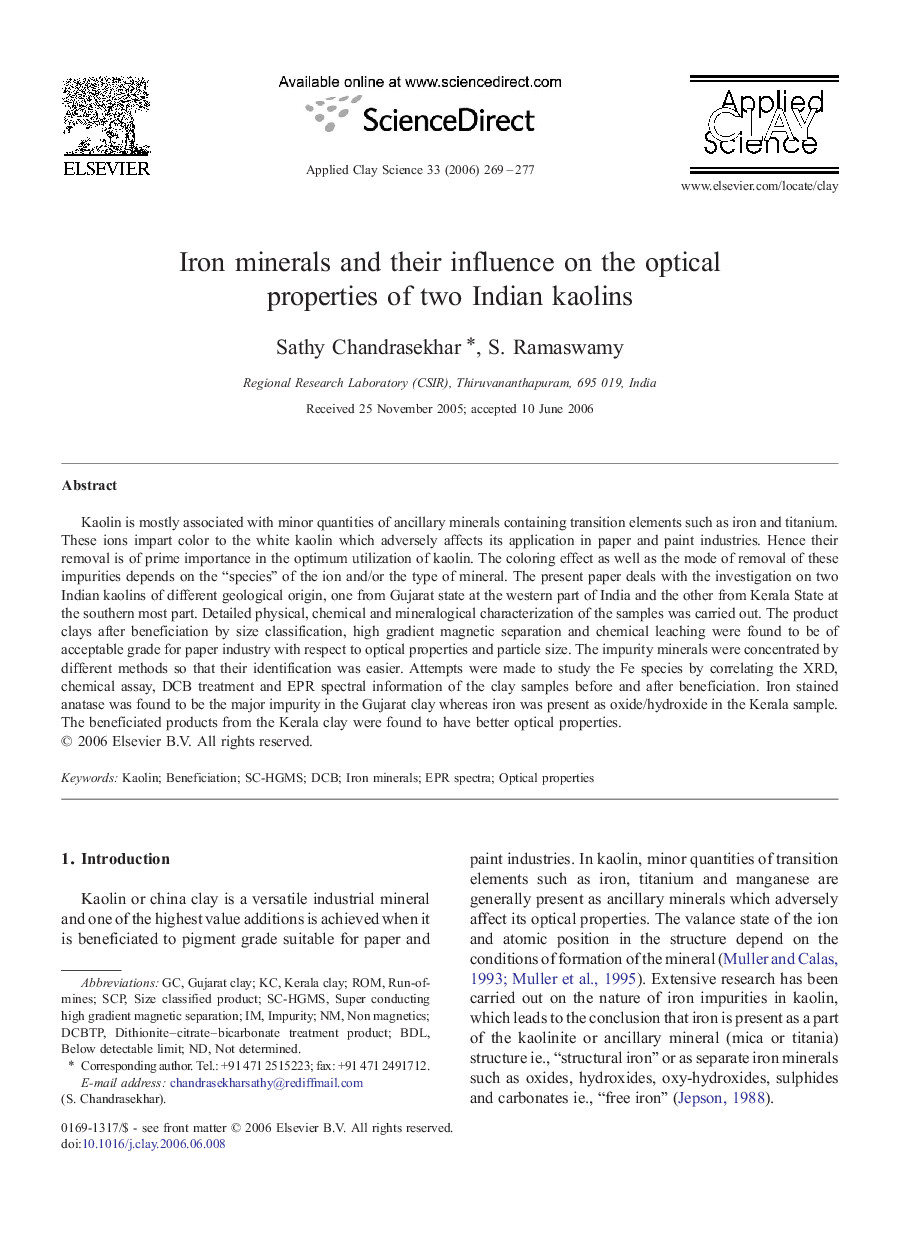| Article ID | Journal | Published Year | Pages | File Type |
|---|---|---|---|---|
| 1696527 | Applied Clay Science | 2006 | 9 Pages |
Kaolin is mostly associated with minor quantities of ancillary minerals containing transition elements such as iron and titanium. These ions impart color to the white kaolin which adversely affects its application in paper and paint industries. Hence their removal is of prime importance in the optimum utilization of kaolin. The coloring effect as well as the mode of removal of these impurities depends on the “species” of the ion and/or the type of mineral. The present paper deals with the investigation on two Indian kaolins of different geological origin, one from Gujarat state at the western part of India and the other from Kerala State at the southern most part. Detailed physical, chemical and mineralogical characterization of the samples was carried out. The product clays after beneficiation by size classification, high gradient magnetic separation and chemical leaching were found to be of acceptable grade for paper industry with respect to optical properties and particle size. The impurity minerals were concentrated by different methods so that their identification was easier. Attempts were made to study the Fe species by correlating the XRD, chemical assay, DCB treatment and EPR spectral information of the clay samples before and after beneficiation. Iron stained anatase was found to be the major impurity in the Gujarat clay whereas iron was present as oxide/hydroxide in the Kerala sample. The beneficiated products from the Kerala clay were found to have better optical properties.
